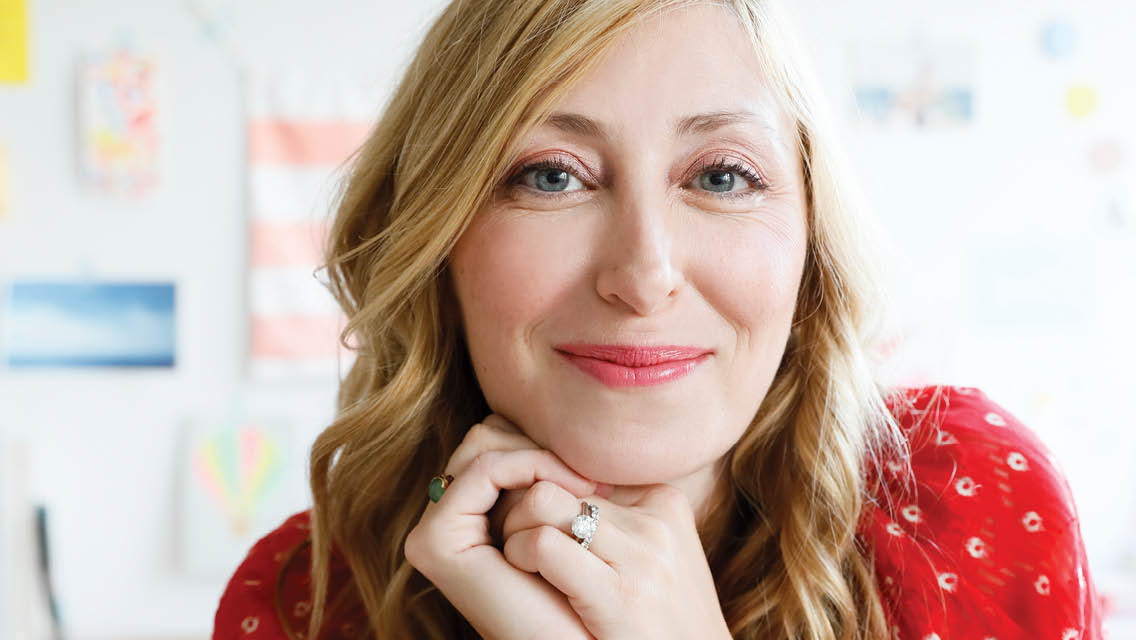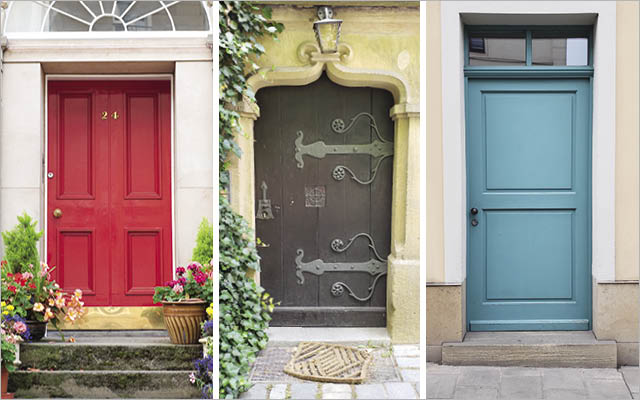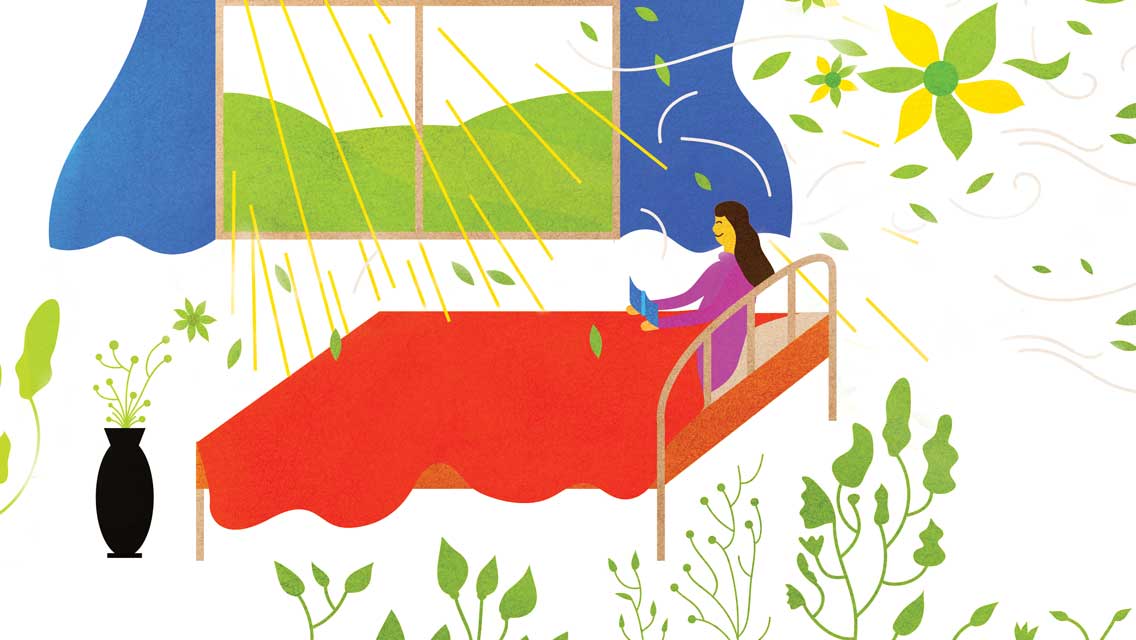When Ingrid Fetell Lee’s academic advisors remarked that her work inspired a feeling of joy, she wasn’t quite sure what to think. It was her first review in the Pratt Institute’s industrial-design program, and she’d presented an assortment of everyday objects: a lamp, a stool, a small cup. “I thought, Well, that’s weird,” she recalls. “I mean, good. I guess I didn’t fail.”
But how could these physical artifacts evoke an emotional response? “I really wanted to understand what happens in my brain when I look at something that makes me feel joy,” she says. “Because then, as a designer, that’s something I can replicate. I can create more joy.”
That question ultimately led Lee to write Joyful: The Surprising Power of Ordinary Things to Create Extraordinary Happiness. The book draws on neuroscience, psychology, and Lee’s own excursions — including trips to a treehouse bed-and-breakfast in Washington, a hot-air-balloon festival in New Mexico, and a “reversible destiny loft” in Mitaka, Japan — to explore how we can design our surroundings to inspire more daily cheer.
Crucially, joy is different from happiness. “Happiness is more of a broad evaluation of how we feel about our lives over time, whereas joy is much simpler and more immediate,” Lee explains. “It’s an intense momentary experience of positive emotion, one that you really feel in your body: It makes you smile or laugh, or it gives you that feeling of wanting to jump up and down.”
The book is organized around Lee’s 10 aesthetics of joy — pleasurable qualities that tend to cut across lines of age, gender, and ethnicity. For example, the harmony aesthetic includes objects that offer a sense of balance and symmetry. This can partly explain the delight Lee feels when her eye lands on her color-coded bookshelves. Do bubbles, polka dots, and balloons make you smile? Along with other circles and spherical things, they fall under the play aesthetic.
While Joyful might inspire you to consider your home design in a new light, the connection between object and emotion that Lee’s work reveals can extend far beyond your own domicile, reverberating out into your community and public spaces. “As I delved deeper into these findings, joy started to become less amorphous and abstract to me and more tangible and real,” she writes. “I began to see the world as a reservoir of positivity that I could turn to at any time.”
Experience Life | You write in Joyful that we impulsively seek joy in our surroundings but we’ve been taught to ignore it. Why is it important to reawaken that instinct?
Ingrid Fetell Lee | We tend to think of joy as a reward — something we get to have on weekends. We feel like we have to do something to deserve it, but in fact, that relationship is flipped: When we allow ourselves moments of joy, we become more successful and resilient.
Studies show that we’re more productive in a state of joy. Managers who are more joyful have teams that complete their tasks with less effort. Negotiators who come into a meeting with a joyful mindset reach more win-win agreements.
From a physical perspective, experiencing joy can mitigate the effects of stress on the cardiovascular system. So, instead of working ourselves until we burn out, if we allow ourselves small moments of joy, we avoid that end of the stress cycle — so we can be more resilient over the long haul.
And that’s how joy evolved. Negative emotions help us narrow our focus, so we can deal with immediate threats. Positive emotions evolved to broaden our focus. If we only lived in the short-term mindset that negative emotions instill in us, we would never be able to play, to explore, to build human connections. Moments of joy enable us to shore up resources so we can withstand more difficult times.
EL | The last year has largely been a time for grieving what we’ve lost. What do you think about the relationship between grief and joy?
IFL | We measure the height of our joy by the depths of our sorrow. When we don’t allow ourselves to feel sorrow, we also become numb to joy. When we’re not able to experience the full spectrum of human emotion, it gets clipped at both ends.
Grief is an acknowledgment that you had something joyful that lit up your spirit and your soul, that made you feel more alive. To lose that is crushing. But joy is possible even as we’re dealing with pain and sadness — and recognizing those moments of joy can help us make sense of our loss and allow us to find enough light to move through our grief.
EL | How can we as individuals create more collective joy?
IFL | So much of the past year has contributed to this line of inquiry for me. We’ve been more isolated than ever, and yet our behavior needs to be cognizant of the collective to help everyone survive. You can’t go outside without a mask and expect that won’t have consequences — not just for you, but for your neighbor.
We don’t get to opt out of this, and similarly, as we see the fires in California and the worsening storms, we don’t get to opt out of climate change. So, what does it mean to seek more joy in this very complicated landscape?
I think that the answer is often self-help and self-focus. But our own self-improvement is limited by the society in which we live — and in our society, it’s very hard to be well.
It’s natural to be anxious in a world where you have to worry about paying your rent, or you can’t work, or you’re worried about getting sick without health insurance. We have a tendency to make these things about the individual — but this is not anxiety as an individual pathology. This is anxiety as a cultural construct, which keeps the least fortunate in our society from seeking joy.
And so, self-improvement is effective to a point, but we’re still participants in this collective project of human existence. How do we contribute to the evolution of our society to make it more joyful for more people?
It’s a big question. I don’t know that I have answers yet. But if I find more joy, at the most basic level, I feel a duty to share it, to help others find it, and to bring more of it to their communities. I think that’s where it begins.
EL | Why is it vital to consider the aesthetics of joy in public spaces?
IFL | If we see joy as something that needs to be earned, it makes sense that a housing project is just the bare minimum — because that is the lens through which we view joy, and so we think some people don’t deserve it. This does a disservice to society as a whole, and it’s a missed opportunity to use the environment to give vulnerable people a sense of dignity, a sense that life is worth living.
I visited a nursing home in Japan designed by the architect Emmanuelle Moureaux. The common room has these colorful balls hanging from the ceiling, and the chairs are a bright springy green, and it’s such an inviting space. Since they redesigned that room, the families of the residents actually linger longer when they come to visit.
There’s also this study that was done in Vancouver about rainbow crosswalks, and they found that when people stand next to a rainbow crosswalk versus a plain crosswalk, they’re more likely to believe that if they drop their wallet, it would be returned to them.
So, the way that environment makes us feel can shift our perception of others. It’s not just about making a place feel cheery. When we infuse joy into these overlooked spaces, it changes the way people engage with them. It changes the way we engage with each other.





This Post Has 0 Comments